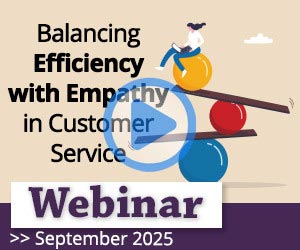Colin Hay suggests that there’s more to employee engagement than just creating ‘happy’ or ‘satisfied’ employees.
It’s often claimed that engaged employees are generally considered to have a greater emotional commitment to their organisations than disengaged employees.
They are also said to care more about what they do, where they work, and whether their organisations are successful in meeting key business goals.
However, there are no hard and fast rules to define what an engaged employee looks like, which makes it a highly complex issue. Employee engagement is difficult to define and tricky to measure accurately.
Also, because it’s tricky to measure, it’s difficult to know how to evaluate problems when things go wrong, as well as to show a return on investment on new employee-engagement initiatives. These are issues that won’t go away any time soon.
Employment Engagement Influences Productivity and Customer Service
There is a great deal of guidance available, however, on best practice to help contact centre managers.
When it comes to measurement, Bright Index, a customer service benchmarking organisation, has set out a range of criteria to evaluate employee engagement. It covers achievement, recognition, development, support, knowledge and more.
Interestingly, it also claims to have proven an irrefutable correlation between employee engagement and important measures of contact centre success such as C-SAT and efficiency.
Global research company Gallup adds a different perspective, claiming that employee engagement is a hugely influential factor in everything – from reducing employee churn and absenteeism to improving productivity and customer experiences.
Recent employee-engagement research from Gallup revealed that 73% of US employees are ‘actively disengaged’, with 56% of ‘not engaged’ employees looking for jobs or watching for opportunities, compared to 37% of ‘engaged’ employees.
It also found that the service sector faced one of the biggest engagement challenges, noting that only 31% of service workers were engaged, compared wiht 38% of managers and executives.
What Contact Centres Can Do to Change
So, what can the service sector in general, and contact centres in particular, do to turn this situation around and make themselves more desirable and ‘preferred’ places to work, with high staff engagement?
The White Paper “20 Strategies and Initiatives to Improve Employee Engagement in your Contact Centre” explores this in detail, touching on each of the twenty areas highlighted by Bright Index:
1. Offer flexible working hours
2. Move to a work-from-home model
3. Empower your employees
4. Collect employee ideas and feedback
5. Regularly survey employees
6. Build specialist skills
7. Optimise the workspace environment
8. Ensure people are remunerated fairly
9. Provide opportunities for career progression
10. Invest in effective planning tools
11. Recruit the right people
12. Ensure effective two-way communications
13. Try gamification
14. Use metrics to drive positive engagement
15. Ensure the commitment of senior leaders
16. Encourage transparency
17. Engage employees in projects outside the contact centre
18. Build a super knowledge base
19. Empower advisors with desktop data
20. Constantly review/refresh your strategies and programmes
Winning Strategies Have Multiple Strands and Clear Objectives
Of course, none of these points in isolation can solve the issues. Successful strategies typically involve several strands and multiple initiatives to put ‘employee engagement’ alongside ‘better customer engagement’ at the heart of an organisation’s goals.
They are also likely to be very clear in their objectives. In other words, what is the employee engagement strategy/initiative designed to achieve? Greater skills and knowledge? More employee empowerment? Enhanced two-way communication? More flexible working hours? Better career prospects? And, what does ‘improvement’ look like in each case?
It’s also useful to consider innovative new employee engagement techniques alongside more traditional ones. For example, moving to a work-from-home model is a strategy that has already proven to be hugely successful for many organisations, in terms of improved productivity and lower attrition/absenteeism, while their employees enjoy a better work-life-balance, reduced travel and lower costs.
In a recent research study for the UK Contact Centre Forum, 92% of UK Home Agents reported that they are happy (at least some of the time), with 72% saying that they are proud to tell people where they work.
Gamification, a technique that uses game mechanics to influence behaviours and measure/motivate people, can also help with motivation.
One contact centre that introduced gamification for its 20,000 frontline advisors reported that 80% of advisors chose to complete training via gamification, with 72% volunteering to complete skills courses that weren’t even required.

Colin Hay
As a result, customer satisfaction improved 10 points, with call handling time falling 15% in just three months.
In global markets, where the difference between success and failure can be marginal, managers must use every tool at their disposal to gain a competitive advantage. And employee engagement is a hugely powerful tool.
As former Campbell’s Soup CEO Doug Conant so succinctly put it, “To win in the marketplace you must first win in the workplace.”
For more information visit www.puzzel.com
Author: Colin Hay
Published On: 26th Sep 2017 - Last modified: 29th May 2024
Read more about - Guest Blogs, Colin Hay, Culture, Puzzel
















